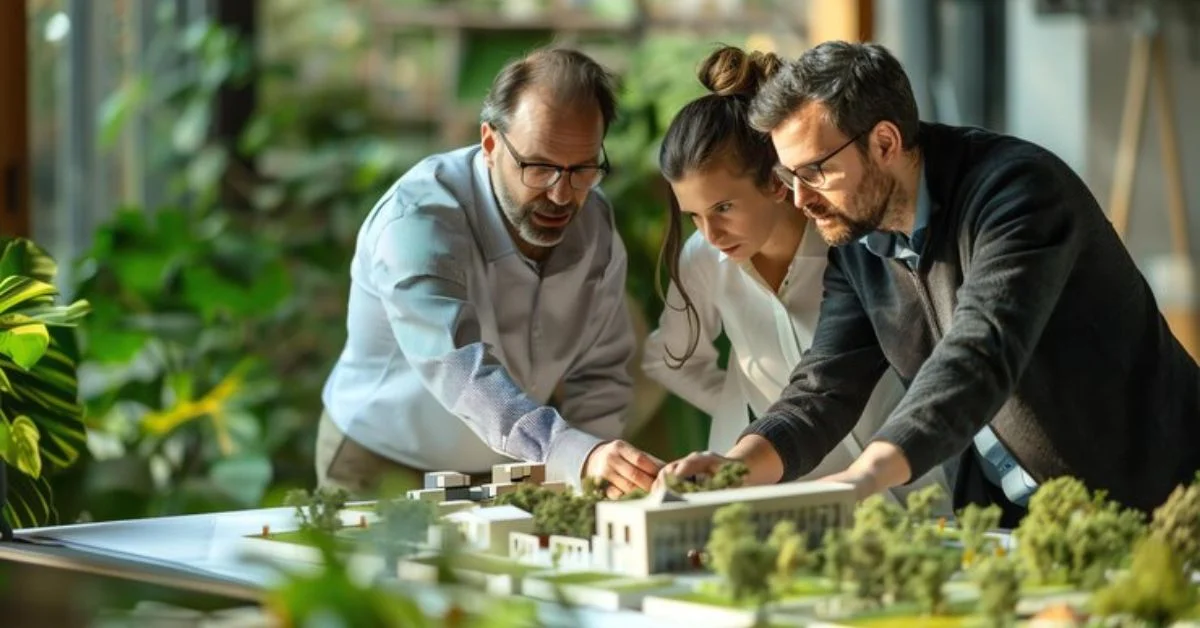In the language of architecture and lifestyle, trends come and go with the seasons: minimalist, industrial, Scandi-boho, smart home. But some ideas don’t trend—they evolve. They resonate not with novelty but with a sense of return.
One such idea, now gaining renewed relevance across urban planning, environmental policy, wellness culture, and home design, is the holistic habitat. The phrase, once relegated to niche sustainability circles, now headlines conversations among architects, climate scientists, mental health practitioners, and even real estate developers.
But what exactly is a holistic habitat? Is it a movement, a model, a design style—or something more fundamental?
This article unpacks the term across disciplines and continents, drawing a picture of how holistic habitats represent not just places to live, but systems to thrive in—ecologically, psychologically, and socially.
Defining the Holistic Habitat
At its core, a holistic habitat refers to an environment—natural or constructed—that supports the well-being of all its components, including humans, animals, plants, and ecosystems.
This is not just about green living. A holistic habitat:
- Reduces environmental harm
- Enhances physical and mental health
- Integrates culture and identity
- Encourages community cohesion
- Adapts dynamically to change
It is both a philosophy and a framework—an answer to the question: What would it mean to design and live in a space that honors the full spectrum of life’s interconnections?
A Brief History: From Ecology to Architecture
The roots of holistic habitat thinking trace back to the biosphere movement of the mid-20th century. Pioneers like Buckminster Fuller, Rachel Carson, and later Vandana Shiva, began questioning not only how we live on Earth—but how our homes, cities, and societies could coexist with Earth.
In the 1970s, indigenous worldviews were increasingly recognized as offering sophisticated models of reciprocal habitation—where humans are stewards, not masters, of place.
In the last decade, the convergence of climate change urgency, post-pandemic lifestyle shifts, and technological innovation has pushed holistic thinking from the margins to the mainstream.
The Built Environment: Design That Breathes
To see holistic habitats in action today, one need only look at eco-architecture, biophilic design, and regenerative urbanism.
1. Materials Matter
In holistic architecture, materials are not just functional—they’re ethical. Designers prioritize:
- Local sourcing to reduce carbon footprints
- Non-toxic and breathable materials like rammed earth, hempcrete, bamboo, and reclaimed wood
- Circular design principles, ensuring materials can be reused or composted at end of life
2. Living Infrastructure
These are buildings that mimic or support living systems:
- Rooftops become pollinator gardens
- Facades host climbing plants for natural insulation
- Greywater is filtered through plant beds for reuse
- Buildings are shaped to optimize natural light, not just to save energy but to align with circadian rhythms
3. Adaptive Architecture
Holistic habitats anticipate change. Whether it’s rising sea levels or shifting demographics, buildings are designed with flexibility: modular rooms, dynamic facades, and community-shared resources that evolve with needs.
Mental Health and the Habitat Connection
Perhaps the most transformative part of the holistic habitat conversation is the emphasis on emotional architecture—how physical environments affect our internal landscapes.
Studies continue to show:
- Access to green spaces reduces anxiety and depression
- Natural light and ventilation improve sleep quality and productivity
- Design that encourages flow and choice—rather than confinement and control—promotes psychological resilience
Holistic habitats borrow from trauma-informed design, neuroarchitecture, and wellness psychology to create soothing, safe, and sensorially supportive spaces.
A 2023 study in Vancouver found that residents of mixed-use communities designed with biophilic principles reported 21% higher levels of daily satisfaction compared to those in standard developments.
Community: The Missing Pillar of Modern Housing
In many urban areas, housing is a product—not a process. It’s bought, flipped, rented, and extracted from. But holistic habitats challenge this notion.
They ask: How does this place build belonging? How does it allow people to participate, not just reside?
1. Shared Stewardship
Many holistic communities now operate under co-housing, intentional community, or land trust models. Residents aren’t just tenants—they’re co-designers and co-managers.
2. Design for Interaction
These neighborhoods aren’t just homes—they’re ecosystems of connection. Design features include:
- Central courtyards
- Community kitchens
- Play gardens
- Shared tool sheds
- Outdoor theaters
Spaces are created not only for what you own, but what you share.
The Role of Technology
Technology can seem at odds with holistic values. But when used thoughtfully, it becomes a bridge, not a barrier.
• Smart Grid Integration
Holistic habitats often use decentralized energy systems, where homes generate solar energy and share it with neighbors via microgrids.
• Environmental Sensing
Air quality, soil moisture, and temperature sensors help inform landscaping, heating, and ventilation systems—not to automate for convenience, but to sync with the environment.
• Community Platforms
Apps for time banking, shared meals, tool borrowing, and decision-making help keep holistic communities connected, transparent, and equitable.
Global Examples of Holistic Habitats
🌱 Auroville, India
An experimental township built on the idea of human unity, it integrates permaculture, spiritual practice, and architectural experimentation. Homes evolve with residents, and community decisions are made through consensus.
🌿 The High Line Neighborhood, NYC
Beyond the famous park, surrounding developments now include green roofs, social spaces, and art installations that emphasize public benefit over private gain—a holistic urban microcosm.
🏡 EcoVillages in Sweden and Denmark
These villages are testbeds for net-zero living, elder-child cohabitation models, and natural wastewater systems. Design here is circular, not linear—valuing compost as much as construction.
The Challenges of Scaling Holistic Habitat Models
Despite their promise, holistic habitats face real-world barriers:
1. Cost
Eco-conscious materials and systems often cost more upfront. Without policy support, these homes remain accessible mainly to the affluent or highly motivated.
2. Regulatory Resistance
Zoning laws, lending criteria, and HOA policies can obstruct shared-living models, off-grid systems, or architectural experimentation.
3. Cultural Buy-In
Not everyone wants to participate in community decision-making or share tools. Holism requires culture change, not just design change.
Yet, where local governments, nonprofits, and innovators align, these models are beginning to break through.
A Holistic Future: Policy, Education, and Beyond
If holistic habitat is to move from prototype to principle, change is needed at systemic levels.
• Education Reform
Architecture and design schools are beginning to include ecological literacy, psychology, and systems thinking in their core curriculum.
• Urban Policy
Cities like Amsterdam and Portland are experimenting with 15-minute city models, where all basic needs can be met within a short walk—reducing traffic, emissions, and isolation.
• Developer Incentives
Governments are offering green loans, density bonuses, and fast-track permits for developments that meet holistic criteria.
Why It Matters Now
In 2025, the crises are converging: climate, loneliness, housing inequity, mental health. Holistic habitat isn’t a silver bullet—but it is a framework that connects them all.
It invites us to think not in fragments but in systems. Not in units sold, but in lives supported. It’s a vision where we don’t just live in places—but with them.
“The question isn’t whether we can afford holistic habitats,” says environmental sociologist Dr. Alma Reyes. “It’s whether we can afford not to.”
Final Thoughts
The holistic habitat is not a utopia. It is a return to ecological sanity and social imagination. It’s a refusal to accept that housing must either be high-tech and isolating or sustainable and austere.
It is, perhaps, the new urban manifesto: to build places that heal, not harm; that connect, not divide; that restore, not extract.
Because in the end, a habitat isn’t just where we live. It’s how we relate to life.
For more information, click here.









